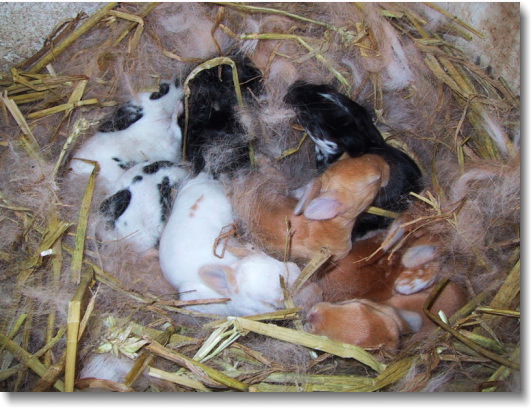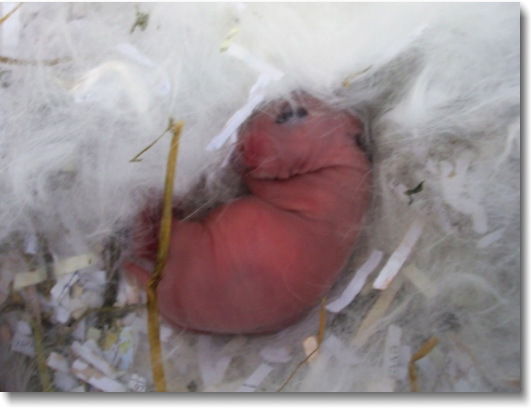History
There is evidence to suggest that the Phoenicians exported rabbits to Spain in 1100 B.C.. [30] The Phoenicians termed the Iberian Peninsula ‘i-shephan-im’ ( ‘the land of the rabbit’), which the Romans later translated into the latin word, Hispania, and from which we get the modern word Spain. [31] Romans kept rabbits in walled enclosures called ‘leporaria’, and there is evidence they may have brought them to Britain, but the colonies did not become established at this time. [32] French monks in the Champagne region of France are credited with the actual domestication of the wild European rabbit (Oryctolagus cuniculus) in the fifth century, producing the rabbit we know today as the Champagne De Argent (De Argent means silver). Most other breeds of domesticated rabbit are descended from the Champagne De Argent. [33] [34]Factoid: As of 1995, there are 61 domesticated rabbit breeds and 531 varieties recognized in the United Kingdom, with more being constantly produced by selective breeding. But they're all derived from the same species of European wild rabbit (Oryctolagus cuniculus). [35]

A nest full of baby rabbits.
Image Source: André Mouraux / License under Creative Commons 2.0
Available in two sizes:
1024 x 768 || 800 x 600
In the 12th century, conies, or rabbits as they are now called, were brought to England by the Normans. Rabbit, originally was the name for a baby rabbit, but more recently has become the term to define both adults and babies. Rabbits were bred for food and fur. These domesticated rabbits soon established wild populations. [36] [37] [38] In the 14th century, Gaston Phoebus, a French count, wrote a book (1387) in which he explained different methods of hunting rabbits. In one illustration, muzzled ferrets were sent down rabbit holes while men with nets waited at the other holes for the rabbits to pop out. [39] Meanwhile in Britain, for 900 years after their introduction, they were seen as a major economic asset. Rabbits were able to breed rapidly, supply fur, and (since refrigeration was not available) were just the right size for a meal without leftovers. These attributes made them a great asset. They were kept in walled enclosures called 'warrens', which is now used to refer to all rabbit colonies and burrows. [40] In the 1700s rabbit population in Britain greatly expanded. Farmland management began favoring extensive hedgerows enclosing fields. The hedges were an ideal habitat for the rabbit to build a burrow right next to an entire field of food. [41] But it wasn't until the early 20th century that their numbers skyrocketed. [42] By the 1950s rabbits were inflicting an estimated 50,000,000£ worth of damage a year. [43]

A baby rabbit
Image Source: Vivian Evans / License under Creative Commons Attribution-Share Alike 2.0 Generic
Available in two sizes:
1024 x 768 || 800 x 600
In 1953 Myxomatosis spread from France to Britain. Myxoma is a virus that is spread quickly by rabbit fleas. It killed more than 99% of all the rabbits in Britain in two years. [44] However, rabbits have not always simply been viewed as a meal or pest. Starting in the Victorian times, pet rabbits gained in popularity. Currently, they are the third most popular mammal kept as a pet in the UK, replacing the more traditional family dog or cat. [45] The Belgian hare was the first domesticated rabbits to become popular in the United States. While rabbit hunting in America prior to the 1900s was common, domestic rabbitry did not become popular until the early 1900s. [46] Few, if any, breeds were developed from the native wild rabbit population. [47] The Belgian hare (a breed of European rabbit) is a fairly large rabbit that first caught the attention of rabbit fanciers, but later also gained popularity as a meat rabbit. Ultimately, breeds were developed to fit the rabbit fancier, the commercial meat market, and the fur industry. While many other rabbit breeds have followed the success of the Belgian hare, the Belgian hare itself is now a rare breed in the United States. [48] Their size makes them less popular with the urban populations, and few people in the US eat rabbit anymore. [49]
Copyright © 2008 Rabbit Pictures & Facts
Member of Fohn.net
Image Source for Eastern cottontail at top of page: William R. James, U.S. Fish and Wildlife Service.
Image Source for cottontail at bottom of page: Clinton & Charles Robertson / License under Creative Commons 2.0.
